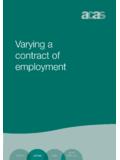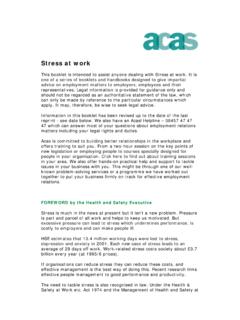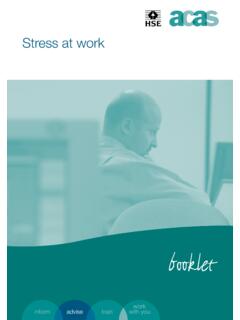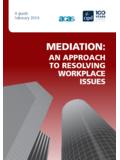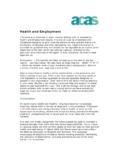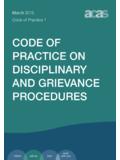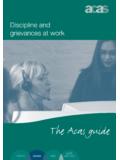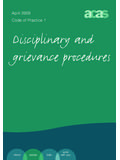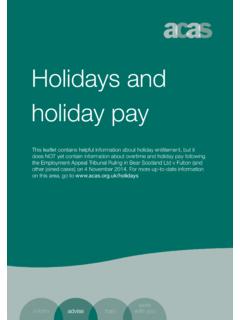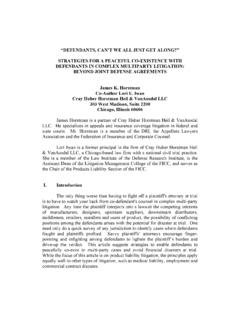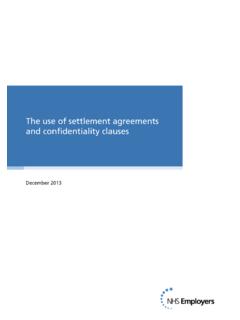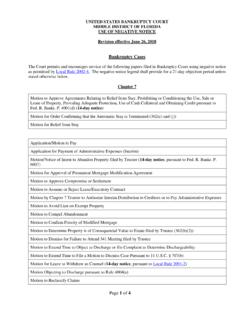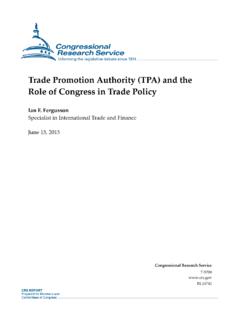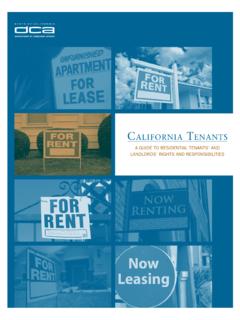Transcription of Settlement Agreements
1 1. Settlement Agreements (under section 111A of the Employment Rights Act 1996). Code of Practice 4. Published by TSO (The Stationery Office), part of Williams Lea Tag, and available from: Online Mail, Telephone, Fax & E-mail TSO. PO Box 29, Norwich, NR3 1GN. Telephone orders/General enquiries: 0333 202 5070. Fax orders: 0333 202 5080. E-mail: Textphone 0333 202 5077. TSO@Blackwell and other Accredited Agents Published with the permission of Acas on behalf of Her Majesty's Stationery Office. Crown Copyright 2013 All rights reserved. Copyright in the typographical arrangment and design is vested in the Crown.
2 Applications for reproduction should be made in writing to Information Policy Team, The National Archives, Kew, Richmond, Surrey TW9 4DU; or email: First published 2013. ISBN 9780117082069. Printed in the United Kingdom by The Stationery Office. P002569530 c000 07/13 30203 19585. Contents Foreword 5. The Code of Practice 7. Introduction 7. What are Settlement Agreements ? 7. Settlement agreement discussions and section 111A of the ERA 1996 9. Reaching a Settlement agreement 10. Improper behaviour 11. What if a Settlement agreement cannot be agreed? 14. 4 Settlement Agreements 5. Foreword The Acas statutory Code of Practice set out in paragraphs 1.
3 To 24 on the following pages is designed to help employers, employees and their representatives understand the implications of section 111A of the Employment Rights Act (ERA) 1996 for the negotiation of Settlement Agreements (formerly known as compromise Agreements ) before the termination of employment. In particular, it explains aspects of the confidentiality provisions associated with negotiations that take place to reach such Agreements . The Code does not cover all aspects of Settlement Agreements . Further guidance on Settlement Agreements can be found in the Acas booklet Settlement Agreements : A Guide which also offers more detailed guidance on the confidentiality provisions set out in section 111A.
4 The Code is issued under section 199 of the Trade Union and Labour Relations (Consolidation) Act 1992 and comes into effect by order of the Secretary of State on 29 July 2013. Failure to follow the Code does not, in itself, make a person or organisation liable to proceedings, nor will it lead to an adjustment in any compensation award made by an employment tribunal. However, employment tribunals will take the Code into account when considering relevant cases. The discussions that take place in order to reach a Settlement agreement in relation to an existing employment dispute can be, and often are, undertaken on a without prejudice'.
5 Basis. This means that any statements made during a without prejudice' meeting or discussion cannot be used in a court or tribunal as evidence. This without prejudice'. confidentiality does not, however, apply where there is no existing dispute between the parties. Section 111A of the ERA 1996 has therefore been introduced to allow greater flexibility in the use of confidential discussions as a means of ending the employment relationship. Section 111A, which 6 Settlement Agreements will run alongside the without prejudice' principle, provides that even where no employment dispute exists, the parties may still offer and discuss a Settlement agreement in the knowledge that their conversations cannot be used in any subsequent unfair dismissal claim.
6 It is the confidentiality aspect of section 111A that is the specific focus of this Code. Throughout this Code the word should' is used to indicate what Acas considers to be good employment practice, rather than legal requirements. The word must' is used to indicate where something is a legal requirement. 7. The Code of Practice Introduction 1 This Code is designed to help employers, employees and their representatives understand the law relating to the negotiation of Settlement Agreements as set out in section 111A of the Employment Rights Act (ERA) 1996. In particular it gives guidance on the confidentiality provisions associated with negotiations about Settlement Agreements and on what constitutes improper behaviour when such negotiations are taking place.
7 2 Settlement Agreements are only one way of handling potentially difficult employment situations. Problems in the workplace are best resolved in open conversations, including, where appropriate, through the use of performance management, or informal and formal disciplinary or grievance procedures. What are Settlement Agreements ? 3 Settlement Agreements are legally binding contracts which can be used to end the employment relationship on agreed terms. Their main feature is that they waive an individual's right to make a claim to a court or employment tribunal on the matters that are specifically covered in the agreement .
8 Settlement Agreements may be proposed prior to undertaking any other formal process. They usually include some form of payment to the employee by the employer and may also include a reference. 8 Settlement Agreements 4 For a Settlement agreement to be legally valid the following conditions must be met: (a) The agreement must be in writing;. (b) The agreement must relate to a particular complaint or proceedings1;. (c) The employee must have received advice from a relevant independent adviser 2 on the terms and effect of the proposed agreement and its effect on the employee's ability to pursue that complaint or proceedings before an employment tribunal.
9 (d) The independent adviser must have a current contract of insurance or professional indemnity insurance covering the risk of a claim by the employee in respect of loss arising from that advice;. (e) The agreement must identify the adviser;. (f) The agreement must state that the applicable statutory conditions regulating the Settlement agreement have been satisfied. 5 Settlement Agreements are voluntary. Parties do not have to agree them or enter into discussions about them if they do not wish to do so. Equally the parties do not have to accept the terms initially proposed to them.
10 There can be a process of negotiation during which both sides make proposals and counter proposals until an agreement is reached, or both parties recognise that no agreement is possible. 1 Simply saying that the agreement is in full and final Settlement of all claims will not be sufficient to contract out of employment tribunal claims. To be legally binding for these purposes, a Settlement agreement has to specifically state the claims that it is intended to cover. 2 The independent adviser can be a qualified lawyer; a certified and authorised official, employee or member of an independent trade union; or a certified and authorised advice centre worker.

